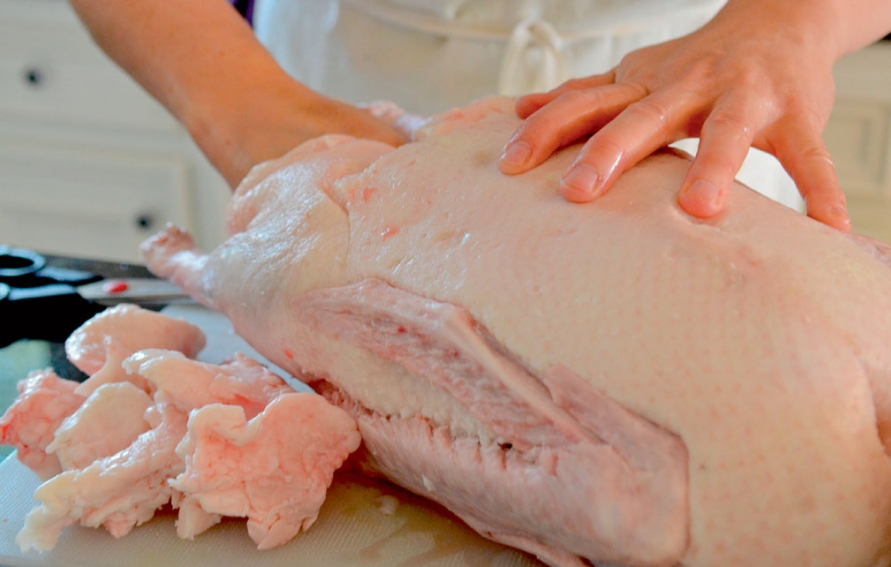Ingredients
- 1 (10- to 12-pound) goose
- 1 tablespoon coarse salt
- 1 lemon, cut in half
- 1 cup coarse-chopped raw potato
- 1 cup (ciabatta/baguette) bread cubes
- 1 onion, chopped coarse
- 1 orange, peel and all, quartered
- 1 bayleaf
- 1 celery stalk, chopped coarse
- ½ cup local raw honey
- ½ cup melted unsalted butter
- ½ cup orange juice
- 1 tablespoon Dijon mustard
Instructions
Goose is one of the fattiest birds to prepare. When you take the goose from its plastic wrapping, immediately you can feel its fat coating your hands.
The first step is to remove as much excess fat as you can. Start with the snow white “loose” fat. You’ll find it near the cavity opening. You can literally scoop out chunks of white fat. Take off excess fat skin, including the “fat flap” (on the neck-side).
Cooking
Render Blond Fat
Place all removed fat into a pan with a cup of water and bring to a boil. Slowly simmer to melt the fat. Strain through a sieve and let cool off completely. The fat will separate from the liquid when cooled: Drain off the liquid and keep your rendered white goose fat in a sealed container in the fridge. It keeps for months, and you can use it instead of butter or oil in cooking.
Getting Ready
If your goose comes with gizzards, use them to make gravy. I roast them with the goose first, then make gravy adding 2–3 tablespoons of the basting syrup.
Dry the cavity very well with a kitchen towel. Brush cavity with fresh lemon juice and rub with coarse salt. Make the roasting stuffing by tossing all coarse-chopped stuffing ingredients together. Put the stuffing in the cavity: It lends its aromatic flavors to the goose, and at the same time it soaks up fat as the goose cooks. This stuffing is discarded at the end. Tie the legs together with kitchen string to close the cavity. Score the bird gently across its breast (it will ease the fat to drizzle out during roasting, and allow the skin to crisp up when roasting uncovered). Rub the goose all over with fresh lemon, followed by coarse salt.
Finally, the basting syrup is quick to put together: Mix together honey, mustard, orange juice and melted butter.
With all preparations done, the bird is now ready to go into the oven.
Roasting
Preheat oven to 300°F.
Place the bird breast side down on a rack in a roasting pan large enough to hold the bird generously. Cover with foil and cook for 2 hours breast side down, covered. It renders out more of the fat.
After 2 hours, turn the goose to breast side up. Cover again and roast another 2 hours, covered.
Take the bird out, remove the foil and increase oven temperature to 350°. Drain off collected fat (this brown fat also can be stored and used for up to a week).
Brush all over with the basting syrup, and roast uncovered for another 2 hours approximately, basting the goose every 20 minutes with the syrup.
After a total of approximately 6 hours roasting time, take the goose out, tent under foil and let it rest for at least 1 hour before carving and serving.




